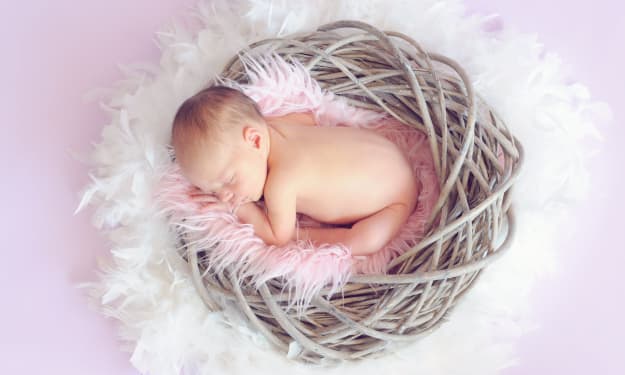The Secret Mental Health Benefits of Indoor Plants
A small summary dipping into the vast pool of academic research on the support of a more natural indoor environment

It was one of the toughest decisions I've ever had to make, but I had no other choice. My kitten was given a new home, and I felt so irresponsible. "A pet is for life!" I heard ringing in the back of my eardrum from the animal rights protest of a school auditorium, a distant memory from old teenage years. I knew the morals of it, really I did. According to the ASPCA around 1.5 million shelter animals are euthanized each year, but my kitten wouldn't be coming with me. Perhaps it was due to my partner's bad credit that I had no choice but to take the first property that I was offered. I would probably never know the exact reason, but in my own mind, it should be illegal to discriminate against tenants with pets. In either case, there was no two ways around it, and I found myself with the predicament of having to choose between keeping my pet and homelessness. I was grateful to say that she went to a good friend of mine, a nurse in fact.
After the loss and inevitable sorrow of losing my pet, I sought to replace the irreplaceable. After all, my main motivation for wanting a furry companion was to feel a little less lonely. My intentions were understandable, since I was only a human with real human feelings, and it was then that I found a somewhat satisfying solution as I read more and more into it. Thus, my indoor plant obsession was born — or rather sprouted.

My newly rented home was a two bedroom luxury apartment in the middle of a major city, which sounded fancy, but in reality it was the only one available in my area. Reputedly, it had been a refurbished factory that had manufactured Spitfire parts during World War II. The floors were made of polished concrete, leaving much of the apartment feeling hollow, cold and bereft of any general feeling of liveliness. That being said, I spent two months hastily attempting to drape the floor with plush rugs and throws before I realised what it needed most – an indoor arboretum.
Admittedly, I became extremely carried away with this idea as I browsed bright and inspirational images of bonsai paradises, hanging baskets galore and all the best conservatories in the country, most of which had at least one cacti garden. I envisioned my new apartment as an Instagrammer's botanical dream until I saw the price tags in H&M Home. Of course a single, measly houseplant couldn't be bought on its own without the decorative pot, and then the possibility of a basket or a plant stand needed to be factored in, as well as the thought of pairing it with a complimentary greenish looking sibling so as to at least resemble some form of in depth understanding of botany and all its wonders.
None of this had any positive effect on my mental health, by the way, until I finally bought my first rubber plant and put away the grandiose visions of becoming a conservatory extraordinaire overnight. In other words, if the thought of a domestic plant haven has always been enticing, here's the scoop.
Indoor Plants and Research
There's a plethora of research in support of the myriad of health benefits brought by the inclusion of plants indoors including private homes, schools, businesses, hospitals and other public areas. As a summary, most of the studies boil down to even the most basic of physical as well as psychological benefits including improved mood, reduced stress and fatigue, and even reduced pain post operation.

VOCs and Indoor Air Pollution
It may come as a shock to realise that pollution doesn't only exist outside; it even cohabits with us in the secludity if our own homes. Regarding the topic of pollution, usually smog, oil spills, plastic ridden oceans or littered beaches spring to mind. Unfortunately, with the ever increasing intensity of materialistic drive perpetuating a parasitic attitude toward the environment, industrial waste continues to mount to the extent that our private homes are not exempt. VOCs, or Volitile Orgainc Compounds, are substances found indoors that mix with compounds derived from the air outside. These substances enter our indoor atmosphere via the detergents, fabric fresheners, hairsprays, paints, etc. that we use within the strict confines of buildings. Most people don't realise the extreme importance of air quality, with the WHO stating that the combined effects of outdoor and houshold air pollution are responsible for the premature deaths of about seven million per year.
Of course, there's always the option of opening a window to help reduce the quantity of these harmful toxins within our domestic breathing space; however, plants also act as orgainc in-home air filters. Here is a brief list of plant species that are known to remove chemicals from the air, a concept that was been researched and scientifically proven by NASA.
- Peace Lily (Spathiphyllum "Mauna Loa")
- Dwarf Date Palm (Phoenix roebelenii)
- Bamboo palm (Chamaedorea seifrizii)
- Rubber Plant (Ficus robusta)
- Ficus Alii (Ficus macleilandii “Alii”)

The Biophilia Hypothesis
The Biophilia Hypothesis is based on the notion that a special bond exists between humans and nature, and as stated in an enlightening study by the Norwegian Institute of Public Health and Norwegian University of Life Sciences, an environment where the usual components found in nature – namely plant life – is absent, a negative impact on overall health and quality of living can be observed. We as humans have evolved to coexist with nature. To bring it back to basics, a desperate society engulfed by sprawling concrete metropolises undoubtedly cannot escape the primeval craving to be amongst the flora and fauna. After all, it is part of the fundamental biology of humanity itself; Mother Earth's own intricate ecosystems brought humankind to its very existence.
Despite the tremendous amount of sacrifices society made on behalf of progress, the internal biological instinct within every human being longs to reunite with its grass roots, like a pesky itch that can only be scratched by an entirely submersive environmental experience such as walk in the park, a saunter through a meadow or a hike up a mountain. In the same way our internal biological batteries are recharged through natural surroundings, a small botanical keepsake plucked from Mother Earth herself can be grown and nurtured in homes and offices as a reminder of the real "happy place" of humanity, mitigating the mental suffering caused by being isolated from nature for so long. A picture is worth a thousand words, but a potted plant that brightens up a lonely window sill is worth a million more.
In other words, a little green stuff never made my headspace any worse, but either way... I'm off to fetch a bamboo palm.
About the Creator
Andromeda Gallarini
I am thoroughly a creative at heart. Writing, painting and crocheting are my practical interests, while mulling over the perplexity of the human psyche and the intricately complex nature of the "human condition" goes on in the background.






Comments
There are no comments for this story
Be the first to respond and start the conversation.